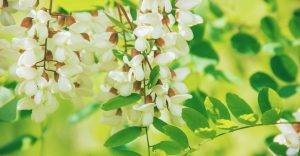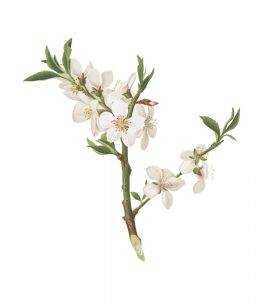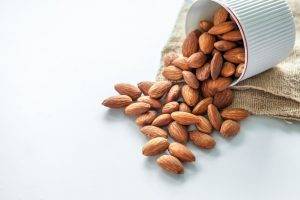
Almond tree – Amygdalus communis
Description of Almond tree:
Amygdalus communis L. Amygillus communis, Amygillus communis, Amygillus communis, Amygillus communis, is a species of mandolafa (popularly known as *Ed.) native to the Caucasus and northern Africa. It is a shrubby tree to 5-6 m tall. Its leaves are lanceolate and serrate. The mandola tree is very similar to the peach tree, differing from the latter mainly in the fact that its leaves have saw-tooths with glandular hairs, the leaf stem being longer than half the width of the leaf plate. The flowers are two-petalled, pale pink and open before the leaves are green, from February to April. The fruit of the mandola tree is a dry-boned seed fruit, i.e. the outer layer of the fruit wall is not soupy but dry and tasteless, and within this is the hard-boned layer which contains the seed. The fruit of the almond is ovoid in shape, velvety, and when ripe it opens up along its longitudinal groove, when the thinner or thicker hard-shelled kernel with its grooved-pitted surface is released, after which the true kernel is opened. Two varieties of the mandola are distinguished, viz sweet and bitter almonds (var. dulcis and var. amara). Both are used in medicine, the formeramygdalae dulces, the latter amygdalae amarae as. Almond oil (oleum amygdalarum) is made from almonds, and bitter almond water (aqua amygdalarum amarum ) is also made from bitter almonds. Almond oil is used to treat hoarseness, lung and bronchitis, earache and skin infections. The bitter almond water contains hexacetic acid and is used to angry! Anxiolytic
Two varieties of the mandola are distinguished, viz sweet and bitter almonds (var. dulcis and var. amara). Both are used in medicine, the formeramygdalae dulces, the latter amygdalae amarae as. Almond oil (oleum amygdalarum) is made from almonds, and bitter almond water (aqua amygdalarum amarum ) is also made from bitter almonds. Almond oil is used to treat hoarseness, lung and bronchitis, earache and skin infections. The bitter almond water contains hexacetic acid and is used to angry! Anxiolytic Sweet almonds are also used to make almond milk and almond paste. Both types of almonds are also used to make syrup (syrupus amygdalarum). Sweet almonds are more sought after and therefore more expensive. Almonds intended for the trade must be cleaned of both the outer soft skin and the hard shell. Externally, it is difficult to distinguish between the two types of almonds, but rather by taste.
Sweet almonds are also used to make almond milk and almond paste. Both types of almonds are also used to make syrup (syrupus amygdalarum). Sweet almonds are more sought after and therefore more expensive. Almonds intended for the trade must be cleaned of both the outer soft skin and the hard shell. Externally, it is difficult to distinguish between the two types of almonds, but rather by taste.  Source: Béla Páter, The wild herbs
Source: Béla Páter, The wild herbs
